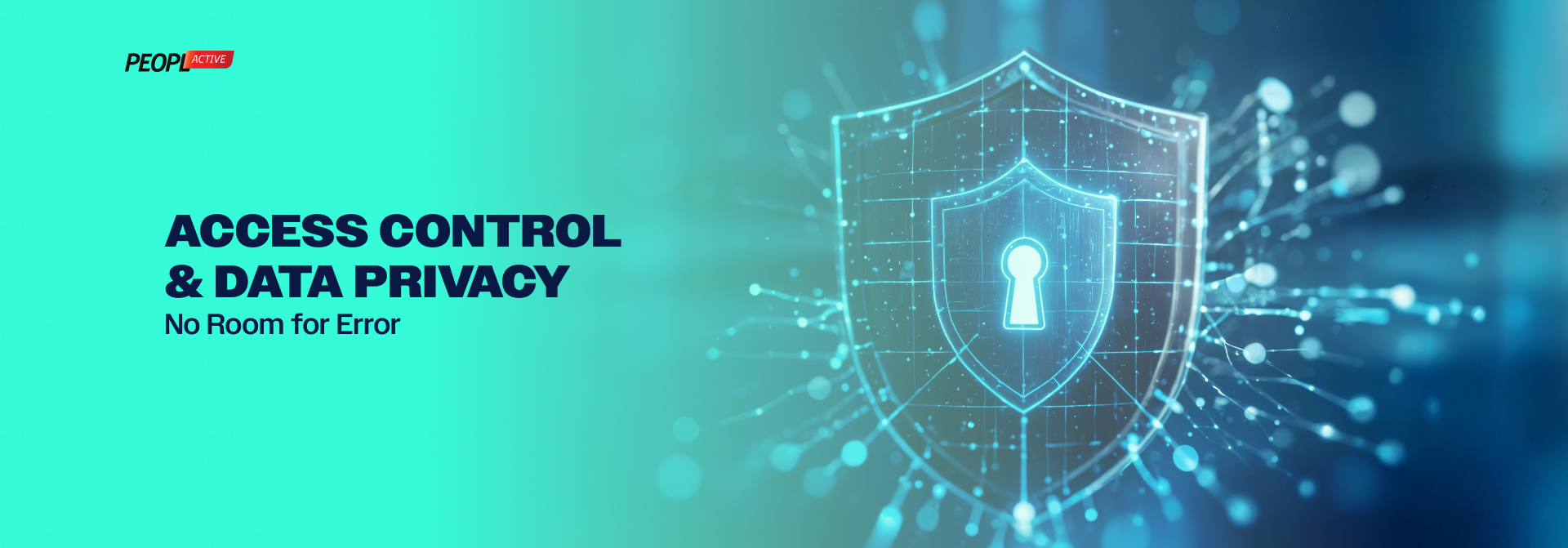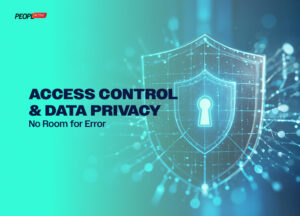Access Control & Data Privacy: No Room for Error
Right, let’s have a proper chat about something that keeps me up at night – and should keep you up too. We’re talking about access control and data privacy, and trust me, there’s absolutely no room for mucking about here.
You know that sinking feeling when you’ve accidentally sent an email to the wrong person? Now imagine that, but with your entire customer database. That’s what happens when access control goes pear-shaped. And with regulatory fines that could make your accountant weep, getting this wrong isn’t just embarrassing – it’s potentially business-ending.
The truth is, proper access management isn’t just another box to tick. It’s the foundation that keeps your sensitive data where it belongs – safe from prying eyes and sticky fingers.
Understanding Cybersecurity Gap Assessment in Access Control
Let me paint you a picture. You’ve got what you think is a decent security setup. Bob from IT set it up years ago, and it’s been ticking along nicely. But here’s the thing – Bob left two years ago, and his admin account is still active. Sound familiar?
A cybersecurity gap assessment is essentially a thorough MOT for your access controls. We’re looking for those niggling issues that could turn into major headaches:
- Those orphaned accounts that nobody remembers creating
- Staff with access to systems they haven’t touched since 2019
- Permissions that made sense five years ago but now look completely bonkers
- Security metrics that tell you whether you’re improving or sliding backwards
According to Gartner’s 2024 research, a staggering 22% of breached organisations had orphaned accounts with active access at the time of attack. That’s nearly a quarter of companies essentially leaving their back door wide open.
How Do You Conduct a Cybersecurity Gap Assessment?
Think of it like a health check-up, but for your digital security. You start by mapping out exactly who has access to what – and I mean everything. Then you compare that reality against what should be happening according to best practices and your own policies.
The process involves interviewing key stakeholders, reviewing documentation, testing controls, and often discovering that Dave from marketing somehow has admin access to your financial systems. (There’s always a Dave.)
Components of a Comprehensive Cyber Security Risk Assessment
Now, a proper risk assessment goes deeper than just checking who’s got the keys to the kingdom. We’re talking about understanding your entire security landscape.
Here’s what we typically examine:
- Asset classification – sorting your crown jewels from your costume jewellery
- Threat modelling – working out who might want to nick your data and how they’d go about it
- Impact analysis – understanding what happens if someone does break in
- Compliance mapping – ensuring you’re playing by the rules (GDPR, ISO 27001, and whatever else applies to your industry)
The IBM Cost of a Data Breach Report 2024 found that the average cost of a breach globally reached £3.6 million. In highly regulated industries like healthcare and finance? Even higher. Makes that assessment fee look like pocket change, doesn’t it?
What Is Included in a Cyber Security Risk Assessment?
A comprehensive assessment covers technical vulnerabilities, human factors, and procedural weaknesses. We examine authentication systems, review access logs, test password policies, and yes, we even check whether your reception desk leaves passwords on sticky notes (you’d be surprised how often this happens).
Expert Insight: “A rigorous risk assessment program, aligned with frameworks such as ISO 27001 and GDPR, is fundamental for timely remediation and continuous compliance in any organisation.” – Dr. Anton Chuvakin, Security Expert and ex-Google Cloud
Vulnerability Assessment and Penetration Testing (VAPT) for Access Control
Right, this is where things get properly interesting. VAPT is essentially hiring ethical hackers to break into your systems before the bad guys do. Think of it as a fire drill, but for cyber attacks.
The process combines automated scanning tools with good old-fashioned human ingenuity. We test everything from your authentication systems to whether Sharon in HR will hand over her password for a box of chocolates (spoiler: she might).
How Do You Perform Vulnerability Assessment and Penetration Testing in Cyber Security?
VAPT follows a methodical approach. First, we scan for known vulnerabilities using automated tools. Then our penetration testers get creative, attempting social engineering, testing password strength, and looking for ways to escalate privileges.
The SANS Institute notes that combining technical controls with ongoing employee training provides the best defence against credential theft and social engineering attacks. It’s not just about the tech – it’s about the people too.
What Are the Benefits of Performing a Vulnerability Assessment Test?
Beyond the obvious “finding problems before criminals do”, VAPT provides concrete evidence of security weaknesses. This evidence helps justify security investments to the board, satisfies compliance requirements, and gives you a roadmap for improvements.
| VAPT Benefit |
Business Impact |
| Identifies vulnerabilities before attackers |
Prevents costly breaches (average £3.6M) |
| Provides compliance evidence |
Avoids regulatory fines |
| Tests employee security awareness |
Reduces human error incidents |
| Validates security controls |
Ensures ROI on security investments |
Selecting the Right Assessment Tools and Partners
Choosing a cybersecurity assessment partner is like choosing a mechanic for your Ferrari – you want someone who knows what they’re doing and won’t take you for a ride.
What Credentials Should I Look for in a VAPT Company?
Look for certifications like CREST, CHECK (for UK organisations), or OSCP for individual testers. Experience in your industry matters too – healthcare has different requirements than retail.
Red flags include companies that promise 100% security (nobody can promise that), those who won’t provide references, or anyone who seems more interested in selling you solutions than understanding your problems.
Which Companies Offer Vulnerability Assessment Tools for Cybersecurity?
The market’s flooded with options, from enterprise giants to boutique specialists. What matters isn’t the size of the company but their expertise, methodology, and ability to communicate findings in terms you understand.
How Much Do Cybersecurity Assessment Services Typically Cost?
Pricing varies wildly based on scope, but expect to invest anywhere from £5,000 for a basic assessment to £50,000+ for comprehensive enterprise testing. Remember, compared to the average breach cost of £3.6 million, it’s money well spent.
What Aspects Should I Consider When Selecting a Cybersecurity Assessment Company?
Beyond credentials, consider their reporting quality, post-assessment support, and whether they offer remediation guidance. A good partner doesn’t just point out problems – they help you fix them.
Common Vulnerabilities in Access Control Systems
Let me share what we typically find during assessments. It’s usually not sophisticated zero-day exploits – it’s the basics that trip organisations up.
- Weak passwords (yes, “Password123” is still disturbingly common)
- Missing multi-factor authentication (MFA)
- Over-privileged accounts (does the intern really need admin access?)
- Poor session management (logged in since 2022, anyone?)
Microsoft Security reports that MFA adoption cuts compromised account incidents by over 99.9%. Yet many organisations still haven’t implemented it. It’s like having a state-of-the-art alarm system but leaving your windows open.
What Are the Most Common Issues Found During a Cyber Threat Risk Assessment?
The Verizon Data Breach Investigations Report 2024 found that 40% of companies experiencing breaches identified poor access controls as the root cause. The usual suspects include excessive permissions, shared accounts, and lack of regular access reviews.
Building a Robust Access Control Framework
Right, enough doom and gloom. Let’s talk solutions. Building a robust framework isn’t rocket science, but it does require commitment and consistency.
Start with zero-trust principles – verify everything, trust nothing. Implement privileged access management (PAM) to keep your most sensitive systems under lock and key. Create clear data classification procedures so everyone knows what’s sensitive and what’s not.
How Do I Complete a Business Cybersecurity Assessment Effectively?
Start by getting buy-in from leadership. Security isn’t just an IT problem – it’s a business problem. Document your current state, define your desired state, and create a roadmap to bridge the gap.
Regular reviews are crucial. Access needs change, people leave, new threats emerge. What made sense last year might be completely inappropriate now.
What Steps Are Involved in a Thorough Computer Security Assessment?
A thorough assessment follows these key steps:
- Scope definition and planning
- Information gathering and documentation review
- Technical testing and vulnerability scanning
- Risk analysis and prioritisation
- Reporting and remediation planning
- Follow-up and verification
The Business Case for Regular Assessments
I know what you’re thinking – “This sounds expensive and time-consuming.” But let me put it in perspective.
The Ponemon Institute found that only 54% of organisations conduct annual cybersecurity risk assessments. Those who do see a 30% lower rate of critical incidents. That’s not just statistics – that’s competitive advantage.
How Frequently Should I Perform a Cyber Threat Risk Assessment?
Annual assessments should be your baseline, with quarterly reviews for high-risk areas. Major changes (new systems, mergers, significant staff turnover) should trigger additional assessments.
Can Cybersecurity Risk Assessments Reduce Exposure to Vulnerabilities Significantly?
Absolutely. Regular assessments create a culture of security awareness. They identify issues before they become incidents and demonstrate due diligence to regulators, insurers, and stakeholders.
Key Statistic: Organisations conducting regular assessments see insurance premium reductions of up to 25% and significantly improved incident response times.
Post-Assessment Action Plans
Getting an assessment report is just the beginning. The real work starts with remediation.
Prioritise fixes based on risk scores – not everything needs fixing immediately. Implement continuous monitoring to catch new issues as they arise. And please, invest in staff training. Your people are your first line of defence, not your weakest link.
How Do Cybersecurity Risk Assessments Help Enhance Overall Security?
Assessments provide a structured approach to security improvement. They move you from reactive firefighting to proactive risk management. Plus, they give you metrics to track progress and justify security investments.
What Should I Expect During a Cyber Security Assessment?
Expect some disruption, but a good assessor minimises this. You’ll see interviews with key staff, requests for documentation, and testing activities. The process should be collaborative, not adversarial.
Creating a Culture of Security Excellence
Here’s the thing – security isn’t a destination, it’s a journey. And it’s not just about technology; it’s about people and processes too.
Leadership must champion security initiatives. When the CEO takes security seriously, everyone else follows suit. Future-proof your organisation by building security into your DNA, not bolting it on as an afterthought.
How Can I Identify if My Organisation Needs a Cybersecurity Compromise Assessment?
If you’re asking this question, you probably need one. But specific triggers include:
- Recent security incidents or near-misses
- Significant business changes
- Regulatory compliance requirements
- Insurance or client demands
- That nagging feeling that something’s not quite right
Final Thoughts: Why This Matters More Than Ever
Look, I’ve seen too many organisations learn about access control vulnerabilities the hard way – through breaches, regulatory fines, and damaged reputations. The good news? It’s entirely preventable.
Access control and data privacy aren’t just IT concerns – they’re fundamental to business survival in our digital age. With the right approach, regular assessments, and a commitment to continuous improvement, you can sleep soundly knowing your data is secure.
Remember, in cybersecurity, paranoia is professional. Question everything, verify constantly, and never assume your defences are impenetrable. Because when it comes to protecting your data, there truly is no room for error.
Ready to take the next step? Start with a comprehensive assessment. Your future self (and your stakeholders) will thank you.

















